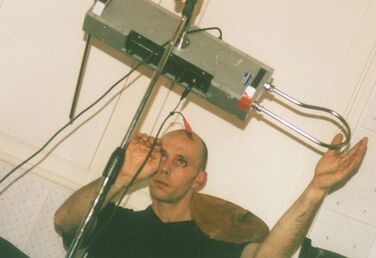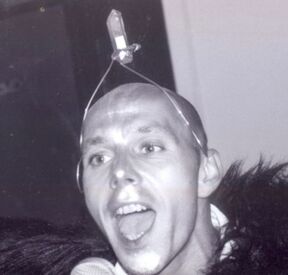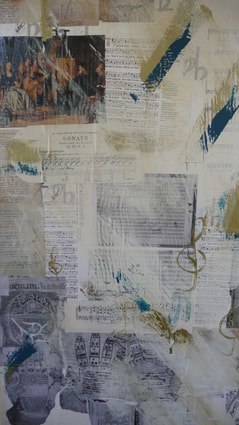I have been exploring the boundless potential of bringing poetry to new audiences and immersing them in the present moment, drawing inspiration from both Zen and Dadaism in visual art and performance
Welcome to a page dedicated to showcasing my artistic statement.
Here, you will find a collection of scripts that explore the concepts and ideas that drive my work as an artist. These scripts provide a detailed exploration of our artistic vision and the philosophies that inform our creative process. Whether you are a fellow artist, a student of art, or simply someone who appreciates the arts, we hope you find these scripts insightful and thought-provoking. Enjoy reading!"
Here, you will find a collection of scripts that explore the concepts and ideas that drive my work as an artist. These scripts provide a detailed exploration of our artistic vision and the philosophies that inform our creative process. Whether you are a fellow artist, a student of art, or simply someone who appreciates the arts, we hope you find these scripts insightful and thought-provoking. Enjoy reading!"
MULTI-MEDIA VS MULTI-SENSORY
|
As an artist in the third millennium, I reject the labels that the art world often tries to impose on creative individuals. Instead, I define my work as Multi-sensory Hypertext, which allows me to explore the limitless possibilities of expressing poetry to new audiences. Multi-sensory Hypertext is a concept that goes beyond traditional forms of art, such as photography, performance, and sound art. It's about creating a sensory experience for the audience, rather than focusing on the medium or vessel used to deliver the message*. An example of this is my piece 'Anatomy of a slide show', which is not just video art, but a Visual Experiential Formula. The choice of images, colors, and texts are edited in a way that stimulates the viewer's sense of sight. Similarly, The Sound of The Shore and Deliverance are not just video art, but a new form of poetry that can be best described as Multi-sensory Hypertext. In my performances, I combine elements of Poetry Performance, Live Art and comedy to create dynamic solo acts. These performances are a presentation of my Multi-sensory Hypertext, becoming a Multi-sensory Performance. I believe that as a poet in the third millennium, I have the opportunity to use more than just words to express the inexpressible. I am not limited to a single medium or label, and instead, I strive to create a unique and immersive experience for my audience through Multi-sensory Hypertext. *The difference between multimedia and multi-sensory art is in the focus of the creative process. Multimedia art is focused on the medium or vessel used to deliver the message, such as video, audio, and text. These mediums are combined and used in various ways to create an immersive experience for the audience.
On the other hand, multi-sensory art is focused on the audience and their experience of the art. The artist creates art that stimulates multiple senses simultaneously, rather than just one sense. This allows the audience to engage with the art in a more immersive and holistic way, creating a unique and memorable experience. |

Beyond the Frame: An elegantly minimal installation designed for the Dhyanglophone Stage, showcasing the power of sound to evoke vivid imagery in the minds of the audience. The piece features an empty golden picture frame and two suspended Indian flutes, delicately suspended in the center of the stage by an invisible fishing line.

Exploring the uncharted realm of sensory performance: I'm sitting on a sleek designer chair very low on the floor and playing an upside-down theremin while reciting poetry in London during a combine arts event. Titled 'C14', this multi-sensory performance is enhanced by the use of CaosPad, a low-tech sound pedal and the addition of lemon grass and neroli scents, delving into the largely unexplored realm of olfactory performance.
|
Come artista del terzo millennio, rifiuto le etichette che spesso il mondo dell'arte cerca di imporre agli individui creativi. Invece, definisco il mio lavoro come "ipertesto multisensoriale", che mi consente di esplorare le possibilità illimitate di esprimere poesia a nuove platee. L'ipertesto multisensoriale è un concetto che va oltre le forme tradizionali d'arte, come la fotografia, le performance e l'arte sonora. Si tratta di creare un'esperienza sensoriale per il pubblico, piuttosto che concentrarsi sul mezzo o sul veicolo utilizzato per trasmettere il messaggio. Un esempio di questo è la mia opera "Anatomy od a slide show", che non è solo video arte, ma una formula esperienziale visiva. La scelta delle immagini, dei colori e dei testi sono editati in modo da stimolare il senso della vista dello spettatore. Allo stesso modo, "The Sound of The Shore" e "Deliverance" non sono solo video arte ,ma una nuova forma di poesia che può essere meglio descritta come ipertesto multisensoriale. Nelle mie performance, combino elementi di performance poetica, arte dal vivo e comicità per creare uniche azioni dinamiche. Queste performance sono una presentazione del mio ipertesto multisensoriale, diventando quindi una performance multisensoriale. Credo che come poeta del terzo millennio, ho l'opportunità di usare più che solo parole per esprimere l'inesprimibile. Non sono limitato a un singolo mezzo o etichetta, e invece, cerco di creare un'esperienza unica e immersiva per il mio pubblico attraverso l'ipertesto multisensoriale. La differenza tra arte multimediale e arte multisensoriale è nella focalizzazione del processo creativo. L'arte multimediale si concentra sul mezzo o sul veicolo utilizzato per trasmettere il messaggio, come video, audio e testo. Questi mezzi sono combinati e utilizzati in vari modi per creare un'esperienza immersiva per il pubblico. D'altra parte, l'arte multisensoriale si concentra sul pubblico e sulla loro esperienza dell'arte. L'artista crea arte che stimola simultaneamente più sensi, piuttosto che solo un senso. Ciò consente al pubblico di interagire con l'arte in modo più immersivo e olistico, creando un'esperienza unica e memorabile. |

